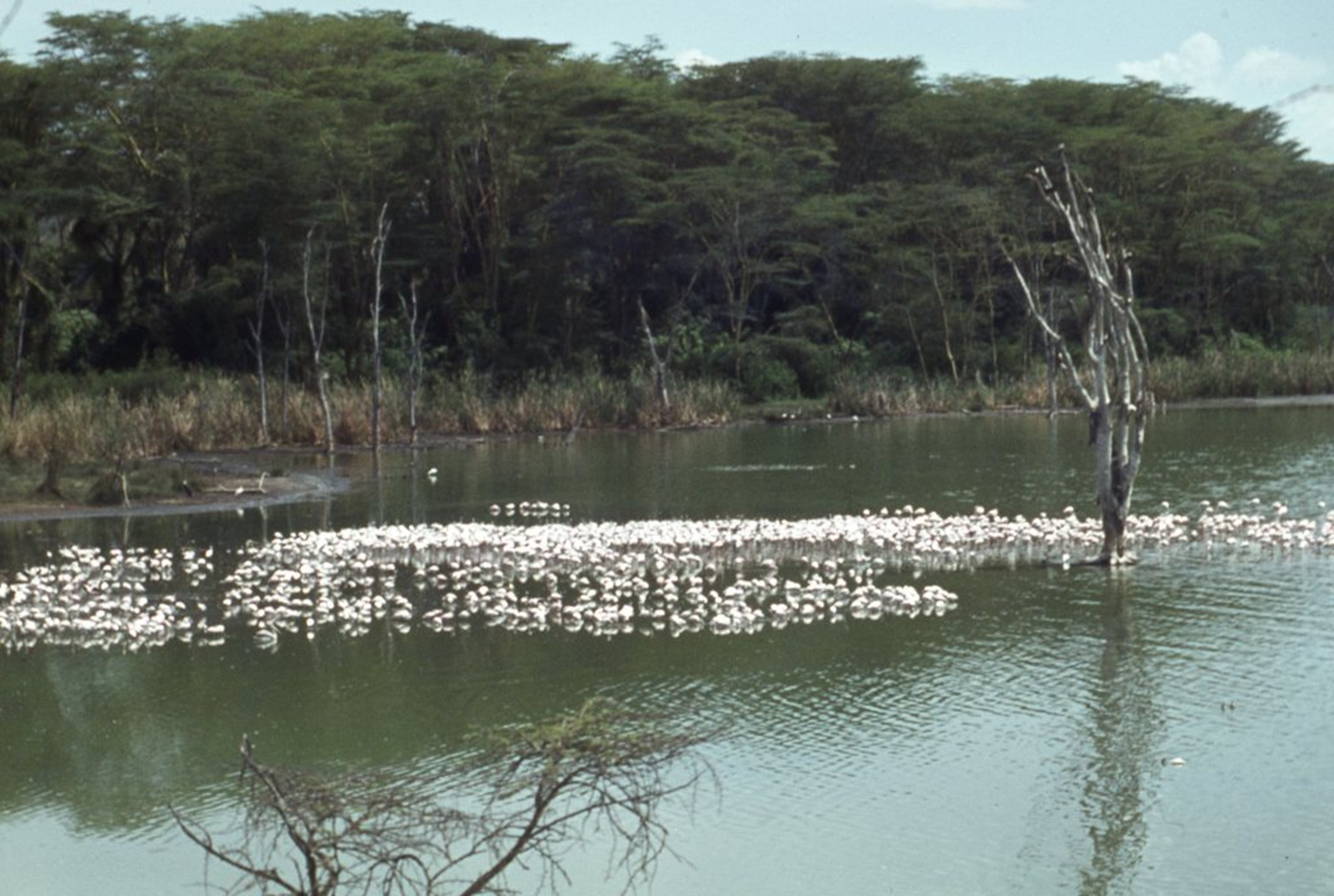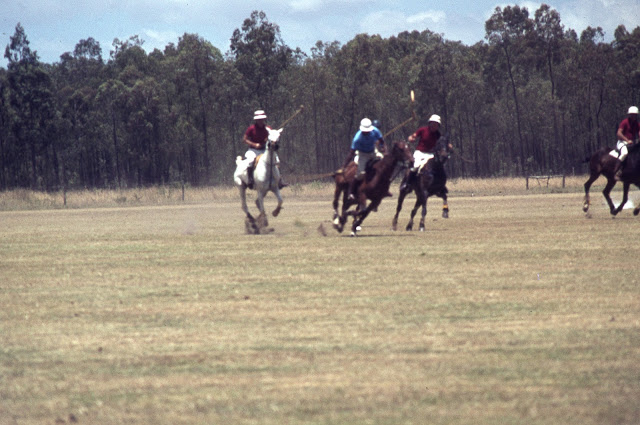AFRICAN ENCOUNTER
Overland Safari Blog
January – May 1973
Part Three – Tanga Turn-off (Tanzania) to Nairobi (Kenya)
13-18 February 1973
Having made some attempt at drying out our very wet camping equipment our journey continued north-west wards until we arrived at Moshi, again on a decent tarred road, and from there we travelled to one of the starting points for the climb of Mount Kilimanjaro (Kili).
Kili is the highest mountain
in Africa, to climb it can take three days for the ascent and a further two
days for the descent. To climb usually requires the services of porters to
carry luggage which usually includes some fresh clothes and bedding. There are huts along
the route to spend the night, for a charge, and the last stage is usually
undertaken in the darkness of early morning in order to witness the sunrise.
I had thought that I quite liked the idea of walking up the mountain, but on enquiry we found that there was a limited number of Porters available, and given the obvious difficulties of the climb – particularly the thin air at the top of the mountain, as well as my lack of experience of mountains (having grown up in a decidedly flat part of England - on the edge of the Fens) I decided to forgo the idea of the climb.
Initially I stayed with the Truck at the campsite
and we travelled into Moshi to do our shopping. Here the market yielded some
real treats in the from of meat, vegetables and SPICES and I was able to create one of my favourite “dry” curries, a Keema
with Lettuce, and I recall that Clive said that he had not had anything similar
since he ate one at Patna railway station in India, which was taken as high
praise indeed!
Our camp site was in the Rain Forest below Kili and we got used to the almost continuous rain. On one occasion we arrived home to find the local boys tucking into one of the local delicacies newly hatched - Horse Flies. They would catch the, in their hands and straight into their mouths. When we expressed surprise they took it as a signal to further exhibit their skills in catching and eating - although we were invited to join them, we politely declined the offer.
Gail (from Australia) doesn’t look to keen on the weather in Kili’s Rain Forest
The gardens at the Hotel at the start
of the climb of Kili
While those of us who were non-climbers stayed at the foot of Kili. Two of the Kiwi girls said that they were going to go to Arusha to meet a
relative who had married a big game hunter who lived there. They thought
that they might get a Game tour with him, so I joined them and we hitched lifts
to Arusha and the first white person we met on our arrival was the Wife of said game hunter.
She explained that her husband was away with a party and would not be back for
some days, however that night one of the girls was taken ill with malaria. In
many ways her illness could not have come at a better time for we were given sleeping space in their attic and she was able to be given medical attention
and after a couple of days made a good recovery, such that we were able to
return to our base camp and see the arrival of those who had made it to the top
of Kili and were much elated.
Outside the house of the “Big Game
Hunter” at Arusha
Having collected all of the party we
were able to continue our exploration of East Africa and headed to the Kenyan
coast at Mombasa passing through another game park – Tsavo where the builders
of the railway had sorely suffered from the attentions of the local Lions.
We spent a night in a camp site at
Mombasa which is an interesting place on the Indian Ocean where different
religious traditions are obviously able to live in harmony.
Street Scene in Mombasa with a mix of
races and plenty of Bananas on their way to market
Many peoples came, or were brought, to Kenya to work on the building and operation of Kenya's Railways – of which more later. Then we
headed back through Tsavo to the capital of Kenya, Nairobi.
21-23 February 1973
Having
arrived at Nairobi we camped at Jamhuri Park (Jamhuri means Democracy, and is
celebrated annually throughout the country.
It quickly became apparent that the
main reason for our being in Nairobi; the collection of visas for the Central
African countries, was not going to be an easy matter, and time was needed as
visas would need to be obtained in reverse order, most of which were to be
obtained from one embassy.
24-25 February 1973
After the initial investigations into
visa applications the next thing was to go and see some of the sights of Kenya,
as nothing was likely to happen over a weekend .
Heading north the first lake that we
encountered on the route north along the Rift Valley was Lake Naivasha,
Lake Naivasha –with some
large birds, in the distance
Beyond Naivasha we came to Lake
Nakuru, which is one of the most remarkable in Africa, if not the World, for there, as a result
of the “salinity” of the waters come birds in their thousands. For anyone who
had never seen Pink Flamingos before this was a revelation, together with the
pelicans the birds covered the area of the lake as far as the eye could see.
Nakuru has been made National Park and we were able observe this remarkable
congregation of birds from the cover of a proper bird-hide. This was one place where
the cameras were clicking as fast as they could go; hitherto they had been used
with some conservatism; I was carrying 18 films each of 36 exposures and
they had to last for three months, (I thought) and this was long before the
coming of digital photography - so take an exposure and that was it!
The entrance to Nakuru National Park
An ever moving flock with associated feathers on the water of the lake which from both the Pelicans as well as the Pink Flamingos
25 February– 13 March 1973
From the Lakes we returned to
Nairobi, for further efforts in the serious business of obtaining visas for the
future stages of the journey into central Africa. This was continued to
be a tricky matter as they had to be obtained in reverse order, with the last,
Cameroon being obtained first, the other countries all being dealt with by the
same embassy were Central African Republic, Zaire and Rwanda. Altogether the
process of obtaining the visas took some three weeks which were mostly spent
camped at Jamhuri Park, apart from time that we spent sitting drinking coffee
and chatting with other travellers outside of the famous “Thorn Tree” which was
the recognised place, in Kenya, for such encounters.
On one occasion as we returned home
from Nairobi we saw a Polo match in progress in Jamhuri Park, clearly a
throwback to the Colonial Days, As the match was ending we followed the horses
as they went back to the stables. I recall, rather cheekily asking if I might
sit on one of the Ponies as it went home. My request was granted and as the
animal as it strode out towards its home, with me on its back I enjoyed what
was to for me was a few minutes of sheer bliss!
Nairobi National Park with A Warthog Family, Gazelles and Zebra with the City’s buildings in the background (and no predators!)
3 March 1973
When efforts were not being made to obtain visas we made weekend trips, our next took us to Nanyuki, close to Mount Kenya and Thomson’s Falls all of which
lie north of Nairobi.
Thomson’s Falls, Kenya
The plaque recording that the falls were named after the explorer Joseph Thomson of Dumfries, Scotland
We returned to Jamhuri Park and
during the night we encountered our first theft. Rather unwisely we had left
the Truck unguarded and in the night someone came and took some of our items
including food and the Guitar to which we had all contributed, and our radio.- so bang went my hopes of learning to play the instrument.
The theft was duly reported to the
Police a process which lightened the monotony of another day in the campsite.
The lost items were never recovered however, the tinned food did appear to have
fed someone’s hunger as some open and empty tins were later discovered
along with a rather nasty looking wooden implement which had been used to open
them.





























Comments
Post a Comment